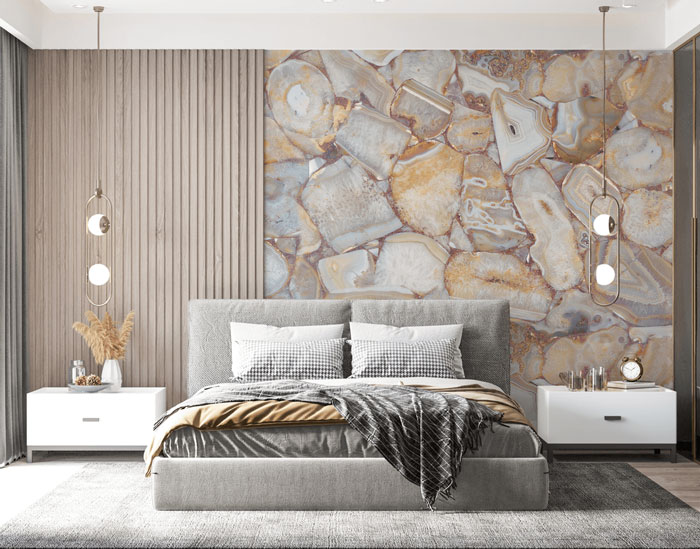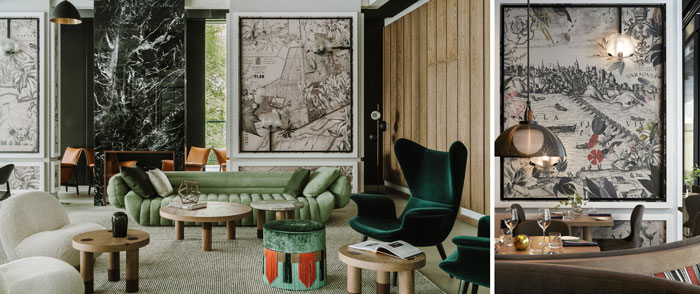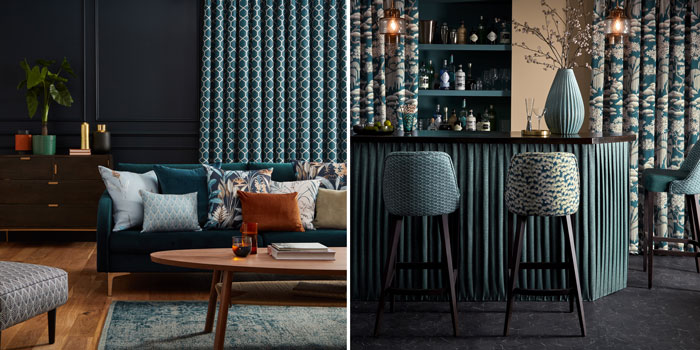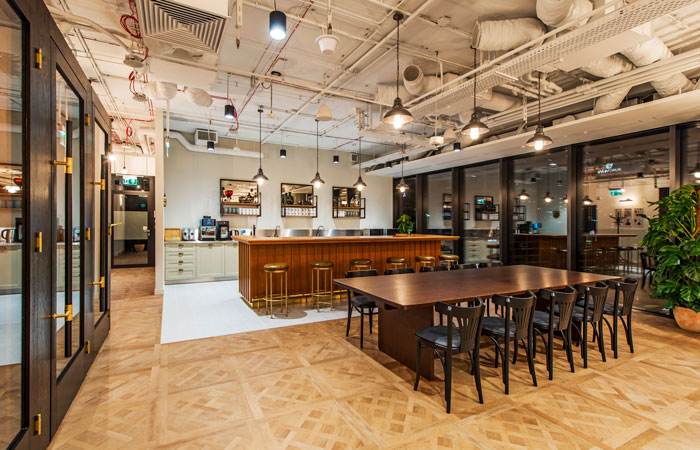The Power of Pattern in Commercial Interiors
In the world of interior design, the power of patterns extends far beyond mere aesthetics. They possess the ability to transform spaces, evoke emotions, and convey narratives, making them an indispensable tool in the arsenal of any skilled designer. Nowhere is this more evident than in the dynamic world of commercial interiors, particularly within the hospitality sector. From luxurious hotels to vibrant restaurants, the strategic use of patterns can create a cohesive and immersive guest experience, ultimately enhancing the overall ambiance and contributing to a memorable stay.
Design Insider caught up with Newmor Wallcoverings, ILIV fabrics, and PlusFloor to hear their views on the impact of pattern on commercial interior design.
Discover Newmor Wallcoverings, ILIV fabrics, and PlusFloor through Product Finder

Newmor Wallcoverings, Sanctuary Quartz design
One of the most intriguing aspects of pattern is its capacity to influence the perception of scale within a space. Through clever manipulation of patterns, designers can either expand or contract the perceived dimensions of a room. In hospitality environments, where the objective is to provide a comfortable and inviting atmosphere, this effect can prove invaluable. For instance, larger patterns such as oversized florals or geometric designs can lend an air of grandeur to a lobby or dining area. These patterns can visually stretch the space, making it feel more spacious and opulent. Conversely, smaller patterns, such as intricate motifs or delicate textures, can infuse intimacy into more compact spaces like lounges or private dining rooms.

Newmor Wallcoverings, Puro Warsaw interiors by De Salles Flint Interior Design
Newmor, a leader in commercial wallcoverings, understands the potential of pattern and the need for adaptable design. Rose Campbell, Head of Design and Marketing explains, “We all appreciate how competitive the hospitality sector can be, with a myriad of hotel brands aiming to create memorable moments for their guests. We’re also seeing a growing trend for these spaces to be unique and have a close connection to their locality which is easily achieved with our digital print capabilities, and the addition of pattern. At Newmor, we feel it is vital to give interior designers the tools to customise a space and pattern is the easiest way to achieve that. With our vast array of print bases and no restrictions on scale or colour the creative possibilities are endless. Our bespoke design service gives us the perfect opportunity to work closely with designers to realise their vision and create unforgettable spaces enhanced by pattern and texture.”
ILIV fabrics are experts in coordinating different scales of pattern and recognise that whilst patterns have the power to evoke emotions on their own, they must also interact with other design elements to create a cohesive scheme. ILIV’s extensive range allows designers to create beautiful interior spaces through a clever use of scale, textures, colours, and materials.

ILIV Kanbina and Peacock designs
ILIV’s Contract Design Manager, Emily Arch explains, “Integrating patterned fabrics into commercial spaces isn’t just about design; it’s about adding character and creating memorable experiences for visitors. By blending large and small-scale patterns, we bring a dynamic touch to spaces, infusing them with personality. It’s like mixing bold and subtle notes in a melody, where vibrant energy is woven into the space, leaving a lasting impact that goes beyond first impressions. This very concept is at the core of our approach when curating our ILIV fabric collections, ensuring that a harmonious interplay of patterns works seamlessly together to offer a curated and captivating experience.”

ILIV Kanbina designs
Flooring also plays a pivotal role in ensuring a harmony of patterns within hospitality spaces. PlusFloor understands this synergy, offering a range of flooring options that seamlessly integrate with other design elements. Whether it’s acting as a unifying base or creating a focal point, flooring design can transform the ambiance of an interior. This marriage of patterns across different surfaces enhances the visual engagement in a hospitality environment.
Kyra Ediss, PlusFloor’s Projects Consultant explained why warmer tones coming back into fashion, “With wooden and stone LVT floor coverings, there’s only a certain spectrum of colours which are used, however there’s been a huge shift over the past 12 months from light naturals to warmer oaks through to mahogany and dark brown shades adding richness and depth to schemes.”
Whilst in general large boards are specified in larger spaces and smaller patterns in more compact spaces, Ediss added, “We’re finding hospitality designers want to add interest to the interior through quirkier flooring specifications. These include three-dimensional flooring patterns or contrasting colours to create striking features and mixing different formats to sit side by side such as chevron and plank. Using patterns such as chevron and soldier pattern can lead the eye, opening a space up or connecting two rooms together seamlessly.”

PlusFloor, Versailles Marseilles Warsaw
Newmor Wallcoverings, ILIV fabrics, and PlusFloor believe in the power of patterns to elevate interior spaces, to create memorable moments. Good hospitality design not only serves a functional space, but also enriches the sensory experiences of those who inhabit them.
Discover Newmor Wallcoverings, ILIV fabrics, and PlusFloor through Product Finder
Product Finder enables Commercial Interior Designers to source products and services from accredited Commercial Suppliers. Search through over 200 UK suppliers, each showcasing newly launched products, projects, catalogues, films, sector research and much more.




